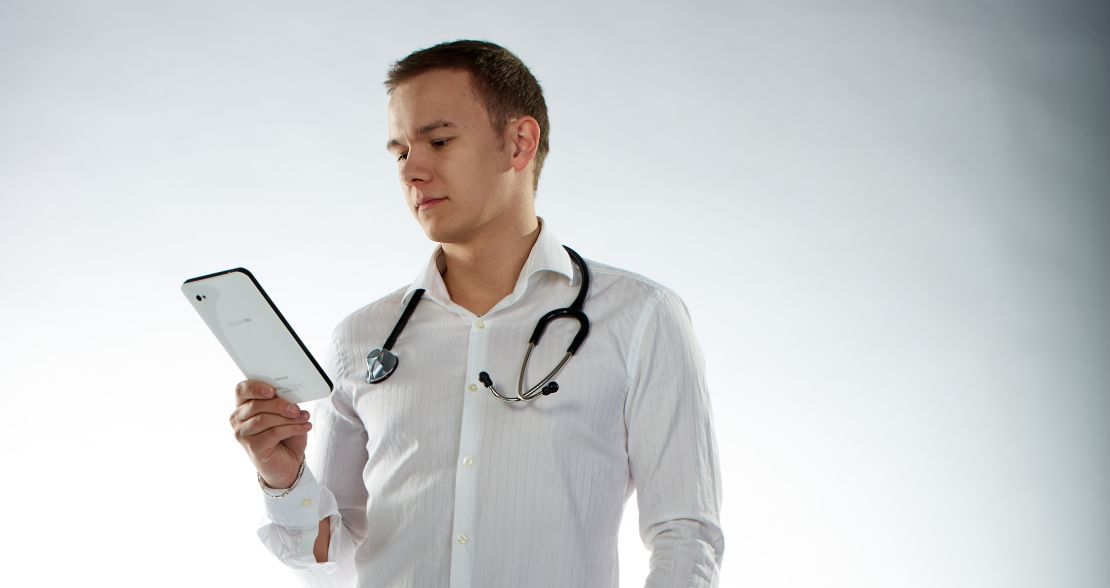Editor’s Note: Bertalan Mesko is a medical futurist, geneticist, international speaker and consultant. He is the founder of Webicina.com, a site that curates medical social media resources for patients and medical professionals and the author of the Social Media in Clinical Practice handbook. Follow him on Twitter. The opinions expressed in this commentary are solely his.
Story highlights
Augmented reality, 3D printing and nanorobots help advance medical care
The future should balance innovative technologies with the human touch, Mesko says
He outlines the tech trends most likely to change our lives, now or in the near future
The medical and healthcare sectors are in the midst of rapid change, and it can be difficult to see which new technologies will have a long-lasting impact.
Ideally, the future of healthcare will balance innovative medical technologies with the human touch. Here, I’ve outlined the trends most likely to change our lives, now or in the near future.
Augmented reality becomes real

Google Glass has already been used to live-stream a surgery, from the surgeon’s perspective. Such augmented reality devices will in the future be able to display the patient’s electronic medical records real-time, organize live consultations and call the ambulance to the exact GPS location in emergency situations.
While Google Glass can be controlled through voice and hand gestures, digital contact lenses will be controlled with brain waves. Patients could go through an upcoming operation step-by-step via virtual reality or choose a hospital based on its “virtual experience” package.
Artificial intelligence in medical decision-making
The knowledge of even the most acclaimed professors cannot compete with cognitive computers. The amount of medical information is growing exponentially, and the use of such solutions in assisting medical decision-making is inevitable.
IBM’s supercomputer “Watson” can process over 200 million pages in one second and is being used by more and more institutions.
Nanorobots in the bloodstream
For years, nanotechnology has presented the possibility of using nanotech devices in treating diseases. Now, it is time for nanotechnology to live up to expectations. Nanorobots in the bloodstream could intervene even before the disease appears. They could keep tissues safely oxygenated after a heart attack, specifically target cancer cells, or remove platelets.
Eventually, modules that self-assemble inside the stomach could perform more sophisticated diagnosis and treatment.
The 3D printing revolution comes to medicine
As 3D printing becomes mainstream, it will upend the pharmaceutical industry and the world of biotechnology – although regulation will be a challenge.
3D printing will enable the creation of medical devices in underdeveloped areas, and customize prostheses and exoskeletons. It will also enable the production of biomaterials such as kidney or heart tissues, drugs and eventually living cells.
Printing out organs that can replace a non-functioning organ in its full physiological capacity will eradicate waiting lists.
Free genome sequencing for everyone
As the cost of sequencing the human genome has been declining and the availability of sequencers has been rising, accessing our own genome will not only be cheaper than a routine blood test, but will eventually be free – although analysis will still be expensive. In the future personal genomics can be applied to patients, meaning they will get drugs and dosages customized to their own genomic code.
Eventually it will be possible to detect preventable diseases in fetal DNA obtained from the mother’s bloodstream.
Real-time diagnostics
The intelligent surgical knife, iKnife, identifies in real-time whether the tissue is malignant.
This means a biopsy will not have to be sent to the pathology lab. It is hoped the Tricorder XPrize will lead to the development of a portable, wireless device that can monitor and diagnose several diseases, as seen in the TV series Star Trek. The ultimate goal is to give individuals more choices in their own health.
The wearable laboratory
An era of wearable medical devices is coming. Scanadu can measure basic health parameters such as body temperature or blood pressure by putting it to the forehead. AliveCor measures ECG, Tellspec detects allergens, chemicals and nutrients in the food, tooth-embedded sensors can recognize jaw movements and even smoking.
Plenty of laboratory methods and procedures will be available at home which could also mean the detection of diseases at an early stage, making intervention more effective. Patients will bring the data to the doctor on any device they use, creating a new role of digital health data analyst.
Call a nurse or a humanoid robot
With the growing number of elderly patients and the global shortage of caregivers, humanoid robots could be able to provide basic care, for example serving as companions for sick children or teaching kids with autism.
A robot nurse assistant will be able to combines robotics and image-analysis technology to find a good vein on the patient’s arm and draw blood in a safe way. Robots will also be used in remote surgery, simulation and training.
Operating rooms will have no people inside except the patient, and surgical instruments will be so precise that instead of manual control, mechatronic tools will be needed to reach the required accuracy.
The connected global brain
Medical communication affects patients and medical professionals worldwide, without exception. Social media, along with connected digital healthcare devices and services, have the potential to become a huge “digital brain” making it possible to transmit, share, crowdsource and store medical pieces of information.
In the near future, whether it is medical information, curated dynamic resources or medical records, the required information will be available to everyone.
This will be the most important development in the history of medicine, and this is why we have to train doctors do be ready for the digital era.
Predictive algorithms and gamification in medical records
Gamification seems to be the key in persuading people to live a healthy lifestyle, or stick to the therapy they have been prescribed. HapiFork measures whether you eat properly, while a smart bra spots cancer in time.
FitBit, Shine and Lumosity are designed to help us live a healthy life by measuring our lifestyle and gamifying the steps required for making positive changes.
Read more: This is your future
Read more: What will the next 10 years of innovation reveal?
Read more: From Star Trek to Siri
The opinions expressed in this commentary are solely those of Bertalan Mesko.









